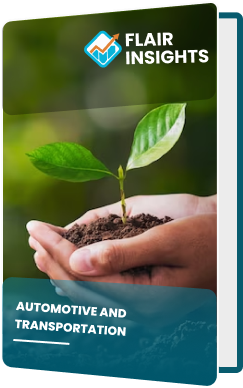
Global Organic Cotton Fiber Market Size By Type (Medical Grade, Normal), By Application (Medical Products, Apparel), By Region, And Segment Forecasts, 2023 to 2032
Report Id: 35878 | Published Date: Jun 2023 | No. of Pages: | Base Year for Estimate: Jun 2023 | Format:
The Global Organic Cotton Fiber Market, a dynamic segment in the textile industry, is witnessing significant growth driven by the rising demand for sustainable and eco-friendly apparel. The market is expected to grow from its valuation in 2023 to reach a notable size by 2031, with a robust CAGR during the forecast period. Increased consumer awareness, coupled with stringent environmental regulations, is fueling the demand for organic cotton as manufacturers shift towards eco-friendly raw materials. This market encompasses a range of cotton products, with applications across various sectors, including apparel, home furnishings, and personal care products.
Drivers:
Growing Consumer Demand for Sustainable
Products: A shift towards environmentally friendly and ethically sourced
materials is driving the demand for organic cotton, especially in apparel.
Regulatory Support for Organic Farming
Practices: Governments worldwide are promoting organic farming to reduce
pesticide and chemical use, supporting the growth of the organic cotton market.
Increased Disposable Income in Emerging
Economies: Rising income levels in developing regions contribute to higher
spending on sustainable products, including organic cotton textiles.
Restraints:
Higher Costs of Organic Farming: Organic
cotton production is more resource-intensive, leading to higher costs that can
limit adoption, especially in price-sensitive markets.
Availability of Low-Cost Conventional
Alternatives: Conventional cotton remains a cheaper alternative, and the market
faces competition from synthetic fibers in specific applications.
Opportunity:
Expansion into Emerging Markets: Developing
countries are showing increased interest in sustainable products, presenting
substantial opportunities for organic cotton producers.
Innovative Blends and Product Development:
The integration of organic cotton with other sustainable fibers, such as
recycled polyester, opens new avenues for product innovation.
Market
by System Type Insights:
The market is segmented by product types,
with organic cotton yarn and organic cotton fabric being prominent categories.
The organic cotton yarn segment is expected to dominate due to its extensive
use in the textile industry, driven by increased demand from eco-conscious
brands focusing on sustainable fashion lines.
Market
by End-use Insights:
The apparel segment leads the market, as
fashion brands increasingly prioritize sustainable raw materials. The home furnishings
segment is also expected to grow significantly, driven by consumer preference
for organic materials in products like bed linens and towels.
Market
by Regional Insights:
Geographically, North America holds a
substantial market share, propelled by high demand for sustainable fashion and
consumer awareness of organic products. However, Asia-Pacific is anticipated to
register the highest growth rate, supported by the region’s extensive textile
manufacturing base and rising awareness of organic products.
Competitive
Scenario:
Key players in the Global Organic Cotton
Fiber Market include C&A, H&M, Patagonia, Kering, and LVMH. These
companies focus on enhancing their supply chain sustainability, engaging in
organic cotton farming collaborations, and developing eco-friendly collections.
Recent developments include Patagonia’s increased investment in regenerative
organic certification for cotton and H&M’s launch of an exclusive organic
cotton line.
Scope
of Work – Global Organic Cotton Fiber Market
|
Report
Metric |
Details |
|
Market Size (2023) |
USD 7.5 billion |
|
Projected Market Size (2031) |
USD 13.8 billion |
|
CAGR (2023-2031) |
7.4% |
|
Key Segments by System Type |
Organic Cotton Yarn, Organic Cotton
Fabric |
|
Leading Segment by End-Use |
Apparel |
|
Leading Region |
North America |
|
Growth Drivers |
Rising demand for sustainable textiles,
support for organic farming |
|
Market Opportunities |
Expansion in emerging markets, innovative
blends |
Key
Market Developments:
2023: Patagonia announced its commitment to
scaling regenerative organic cotton farming, aiming to supply a larger share of
the sustainable cotton market.
2024: H&M expanded its organic cotton
product line, with plans to source 100% sustainable cotton by 2030.
2025: C&A launched a collection of
organic cotton products for home furnishings, highlighting eco-friendly living.
FAQs
What is the current market size of the
Global Organic Cotton Fiber Market?
The market is valued at approximately USD
7.5 billion in 2023.
What is the major growth driver of the
Global Organic Cotton Fiber Market?
The primary growth driver is the rising
consumer demand for sustainable and eco-friendly textiles, especially in
fashion.
Which is the largest region during the
forecast period in the Global Organic Cotton Fiber Market?
North America currently leads the market,
with Asia-Pacific anticipated to experience the highest growth rate.
Which segment accounted for the largest
market share in the Global Organic Cotton Fiber Market?
The apparel segment holds the largest
market share due to the growing preference for sustainable fashion.
Who are the key market players in the
Global Organic Cotton Fiber Market?
Key players include C&A, H&M,
Patagonia, Kering, and LVMH, focusing on organic sourcing, sustainable
manufacturing, and eco-friendly products.

Speak with an analyst to get exclusive insights tailored to your needs
.png)
